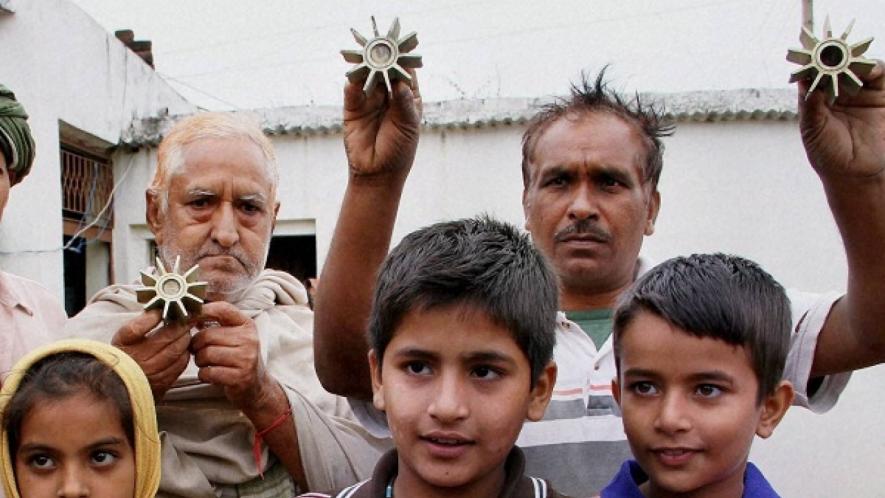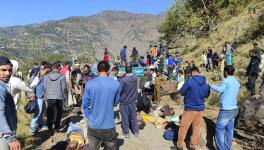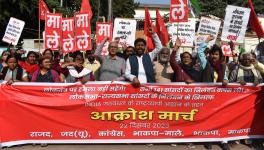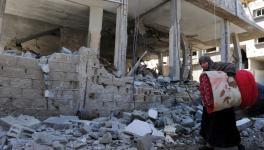Children Worst Affected by Explosive Remnants of War in Jammu and Kashmir

Image Courtesy: DNA
According to the Jammu and Kashmir State Human Rights Commission, there have been around 200 severe injuries caused by ‘explosive remnants of war’. Around 70% of the victims are children below the age of 17 and most of the injuries occurred near the Line of Control (LOC). That a disproportionate number of injuries have occurred among minors, it should be inferred that these children do not know what objects they are picking up or playing near. According to an article in TRT World, the casualties are due to the army, paramilitary forces, and police not clearing the area of unexploded ordnance after a counterinsurgency operation. In these operations often, grenades – whether launched or thrown – as well as military grade high explosives are used in flushing out militants or to breach buildings in which militants are lodged. For those familiar with ordnance, it is known that even though an explosive has been primed, fused and used, it does not always explode.
Even more than 70 years since the end of the Second World War, unexploded bombs are still found in the UK. These bombs are carefully excavated and either defused or detonated in a controlled explosion. An article in Economic and Political Weekly from 2002, displayed the self-defeating nature of laying mines. A the then Minister of Defence told the Rajya Sabha that between December 15, 2001 and March 15, 2002, 176 army personnel had died of landmines and vehicle accidents. This was roughly the time the Army mobilised in ‘Operation Parakram’ following the ‘Parliament Attack’. The Minister also told the Rajya Sabha that the mines would begin to ‘move’ due to rain and wind. This makes mapping the mines a redundant exercise as demining would be done blind.
India is a signatory to the Protocol on Explosive Remnants of War. Under Article 2 of the Protocol, ‘explosive remnants of war’ is defined as “unexploded ordnance and abandoned explosive ordnance.” ‘Unexploded ordnance’ according to this Article means “explosive ordnance that has been primed, fused, armed, or otherwise prepared for use and used in an armed conflict. It may have been fired, dropped, launched or projected and should have exploded but failed to do so.” ‘Abandoned explosive ordnance’ means “explosive ordnance that has not been used during an armed conflict, that has been left behind or dumped by a party to an armed conflict, and which is no longer under control of the party that left it behind or dumped it. Abandoned explosive ordnance may or may not have been primed, fused, armed or otherwise prepared for use.”
The Protocol makes it mandatory for the ‘contracting parties’ to remove all explosive remnants of war. Article 5 of the Protocol makes it mandatory for the ‘contracting parties’ to ensure proper information and education is disseminated to civilians residing in an area where such military operations have taken place. Clause 2 in the Technical Annex to the Protocol makes it mandatory for governments to place warnings, conduct risk education, mark, fence and monitor those areas where such operations have taken place.
According to a 2001 report by United States Bureau of Political-Military Affairs, in Jammu and Kashmir, there were 92 fatalities from landmines in 1999. “From 1994 through 1999, landmines killed 128 military personnel and injured 459 more. During the same period, police and paramilitary forces suffered 52 deaths and 264 injuries. There were 148 civilian fatalities and injuries to another 410. There is no reliable information on the total amount of mine-affected land.” The Landmine and Cluster Munition Monitor identified 3,191 casualties in India from 1999 to 2015. Of these casualties 1,083 were killed, 2,107 injured, and one could not be determined. Nearly half of these casualties were civilians. The Monitor in a separate report noted that in 2013 there were 23 casualties in India and except for one casualty in Chhattisgarh the rest of them all occurred in Jammu and Kashmir. India is not a signatory to the Mine Ban Treaty.
The cases of explosive remnants of war are maiming children in Jammu and Kashmir and this should be a wake-up call for India that it needs to adhere to its international commitments. However, mines and victim-activated explosives are not covered under the Protocol. If the Army’s official position is that clearing takes place properly after counterinsurgency operations and that the explosives causing casualties among civilians are old mines, then India needs to reassess its position on the Mine Ban Treaty.
Get the latest reports & analysis with people's perspective on Protests, movements & deep analytical videos, discussions of the current affairs in your Telegram app. Subscribe to NewsClick's Telegram channel & get Real-Time updates on stories, as they get published on our website.
























